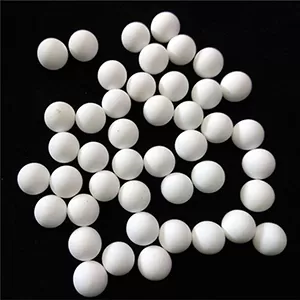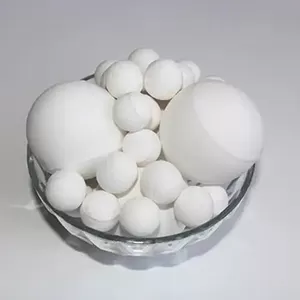Ceramic ball surface roughness, a key metric of surface texture, is measured by parameters like Ra (arithmetic mean deviation), influencing performance in applications such as bearings, grinding, and packing, with values varying based on material and manufacturing processes. This characteristic directly affects friction, wear resistance, and sealing efficiency, making it a critical consideration in industrial design.

The most common parameter for quantifying surface roughness is Ra, expressed in micrometers (μm). For general industrial ceramic balls, Ra values typically range from 0.1 μm to 1.0 μm. High-precision ceramic balls, such as those used in bearings, require much lower Ra values, often between 0.02 μm and 0.05 μm, to minimize friction and ensure smooth operation. In contrast, ceramic balls used as packing in industrial columns may have higher Ra values, around 0.5 μm to 1.0 μm, as extreme smoothness is less critical than structural stability in such applications.
Material type influences achievable surface roughness. Alumina ceramic balls, due to their hardness and brittleness, can be ground to very low Ra values with precision grinding techniques. Zirconia ceramic balls, while tougher, also achieve smooth surfaces, though their elasticity may require slightly different grinding parameters to reach the same Ra as alumina. Silicon carbide ceramic balls, extremely hard, demand specialized abrasive tools for fine finishing but can attain Ra values comparable to high-purity alumina.

Manufacturing processes play a decisive role in determining surface roughness. Initial shaping processes like isostatic pressing produce green bodies with rough surfaces, which are refined through subsequent steps. Grinding with diamond abrasives is the primary method for reducing roughness, with finer abrasives yielding smoother surfaces. Lapping, a precision finishing process using abrasive slurries, further polishes the surface, achieving Ra values below 0.05 μm for high-precision applications.
Surface roughness impacts performance in several ways. In bearing applications, low Ra values reduce contact friction between the ceramic ball and raceway, extending service life and improving energy efficiency. For grinding media, moderate roughness can enhance material capture and grinding efficiency, though excessive roughness may cause uneven wear on both the balls and the material being processed. In packing applications, controlled roughness can promote fluid turbulence, improving mass transfer in distillation or absorption columns without causing excessive pressure drop.
Environmental factors can alter surface roughness over time. Exposure to abrasive fluids or particles may increase roughness through wear, while chemical corrosion can etch surfaces, changing texture. In high-temperature applications, thermal cycling might cause micro-cracking, affecting roughness and, consequently, performance. Regular inspection using profilometers or atomic force microscopes (AFMs) helps monitor roughness changes, ensuring ceramic balls remain fit for their intended use.
In summary, ceramic ball surface roughness is a vital characteristic measured by Ra, shaped by material properties and manufacturing processes, with significant implications for performance across diverse applications. Balancing roughness with other properties like hardness and toughness ensures optimal functionality in specific industrial settings.



